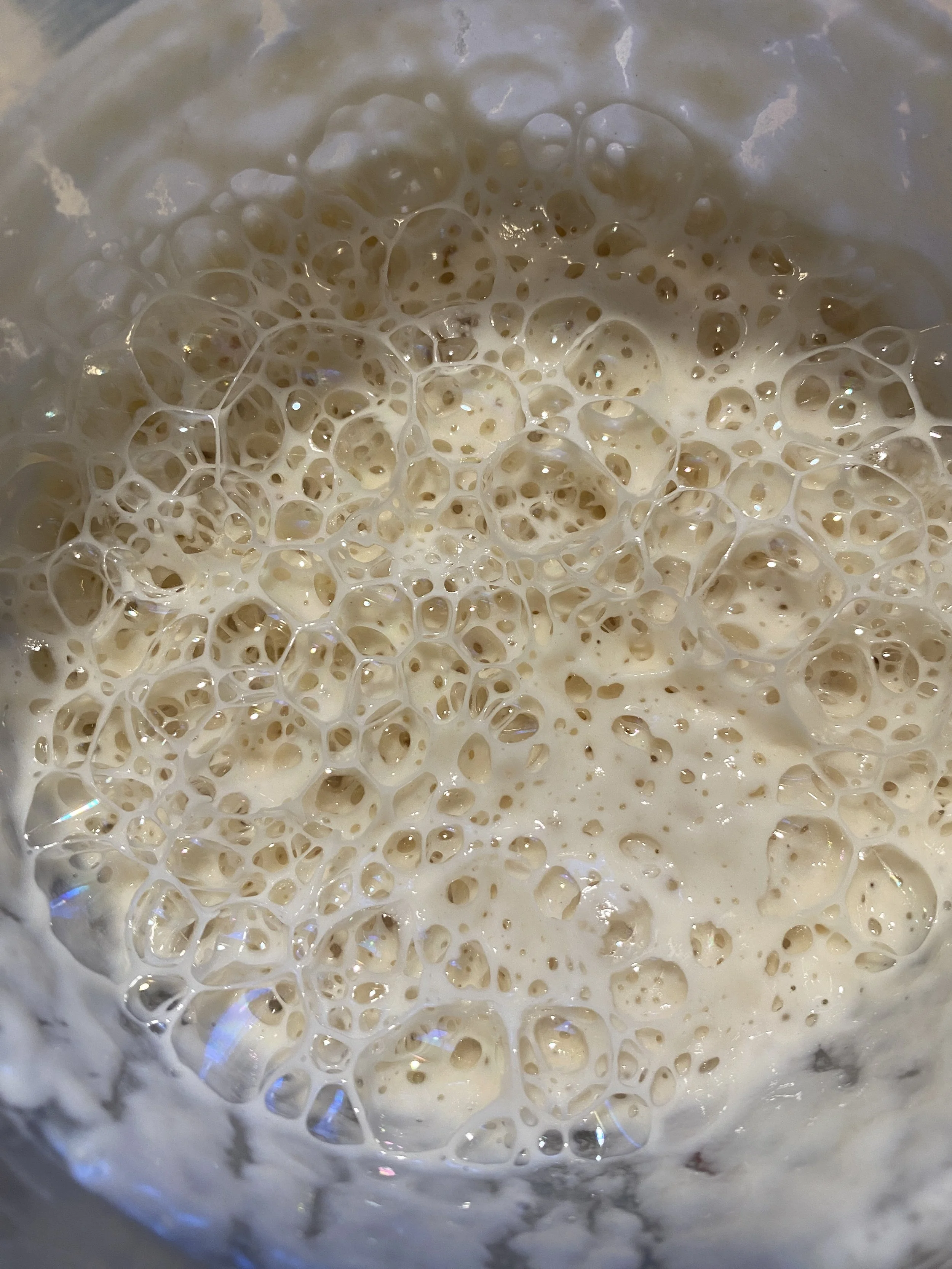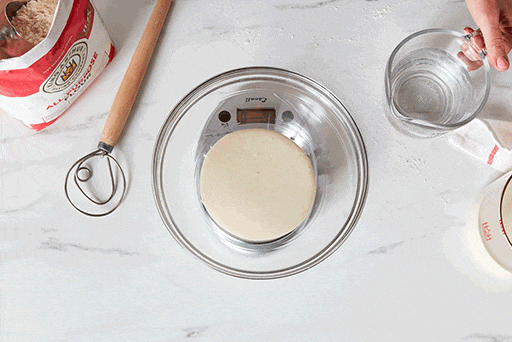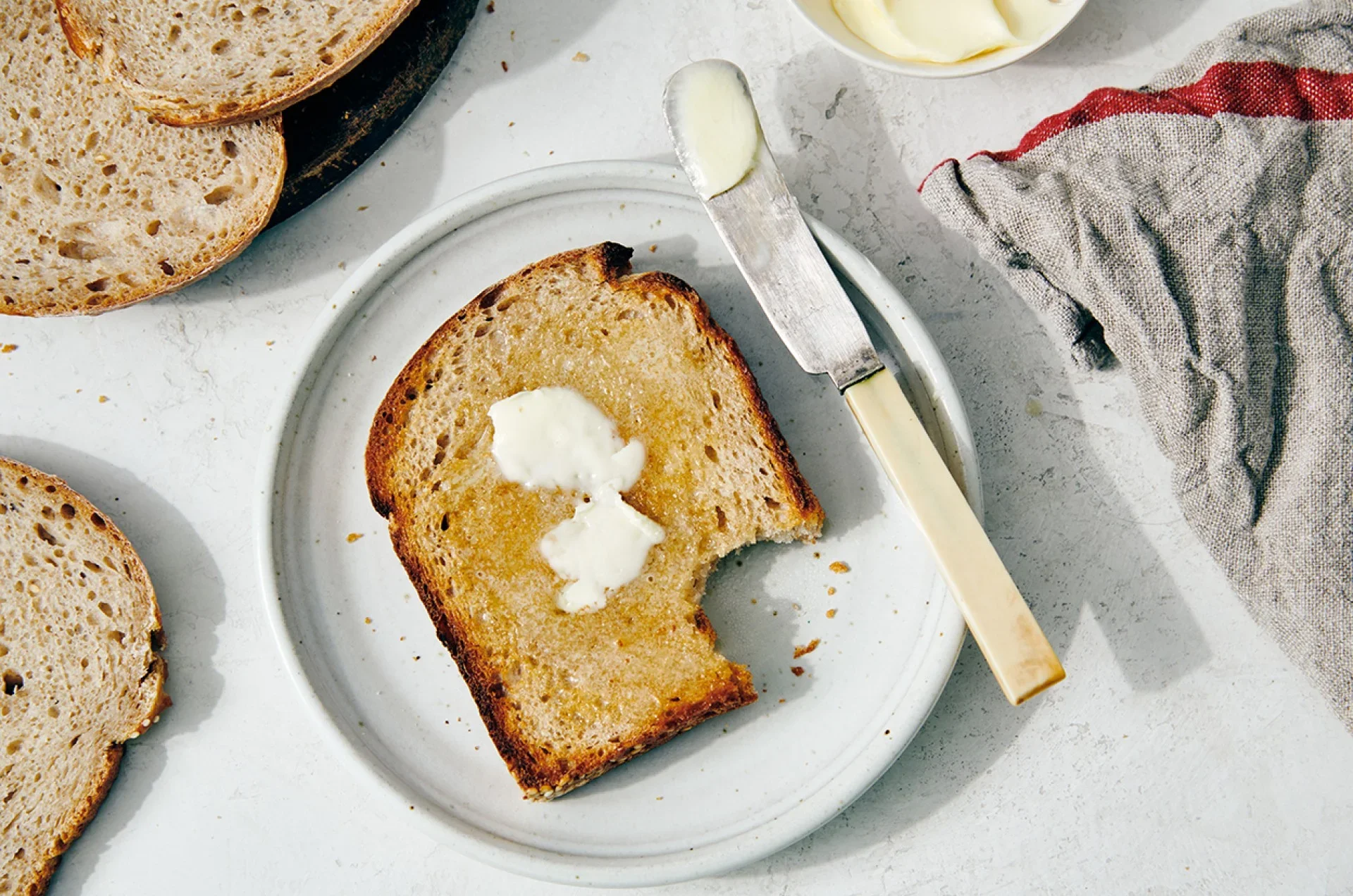
SOURDOUGH TIPS & TRICKS
Maintaining your new sourdough starter
A mature sourdough starter is the foundation of good sourdough bread.
To maintain a sourdough starter, you must store it properly and feed it regularly with equal parts (by weight) of flour and water. Keep your starter at room temperature and feed it daily if you bake often, or in the refrigerator and feed it weekly for less frequent baking.
Room Temperature (Daily): If you bake several times a week, keeping your starter on the counter and feeding it once a day ensures it's always active and ready to use.
Refrigerated (Weekly): For less frequent baking, store your starter in the refrigerator and feed it once a week. A breathable lid is ideal for storing in the fridge. If it starts to separate and has some clear liquid on top, that’s ok, just stir it in. If you see any black or pink spots, though, that could mean it’s contaminated and needs to be discarded.
Feeding Ratios: You can adjust the ratio of starter, flour, and water, such as 1:1:1 (e.g., 50g starter, 50g flour, 50g water) or 1:5:5 (e.g., 50g starter, 250g flour, 250g water), to control how long it takes for the starter to reach its peak. The less starter you use, the longer it will take to rise.
Watch and Wait: Look for signs of activity, such as bubbles and a strong, sour aroma. After a good feeding, the starter should double or even triple in size. This can take anywhere from 4 to 24 hours depending on the feeding ratio and temperature. Make sure there is plenty of room in the container for it to expand!
Discard: If you maintain just a small amount of starter, discarding is not necessary, but if you accidentally end up with more than you need, you can discard the excess or use this inactive starter in another recipe (look up ‘sourdough discard’ recipes for inspiration).
Learn more about maintaining your sourdough starter from the pros at King Arthur Flour.
“Sourdough baking is as much art as science. This method for maintaining sourdough starter is just one of many you might choose to follow. It may not match what's written in your favorite sourdough cookbook, or what's shown in that video you saw online. And that's OK: If you have a process you successfully follow regularly, then stick with it. Or try this one and compare. All good.”
Dig into the details
WATCH AND LEARN
This video was hugely helpful when we were first learning to make sourdough bread. It goes over many of the basics like baker’s percentages, dough hydration, flexible baking schedules, shaping techniques, and more.
Start your journey
The Sourdough Journey is a comprehensive website with great resources for all things sourdough, including videos, downloadable guides, and more. Check out this video about how to dial in bulk fermentation using temperature and percent rise, in addition to time.
beginner-friendly recipes
Get started using your new sourdough starter with these beginner-friendly recipes. I used these exact recipes for years when I first started making sourdough, and they’re a great way to start practicing your sourdough-making skills!
Pain de Campagne (Country Bread) - King Arthur
Easy Everyday Sourdough Bread - King Arthur




